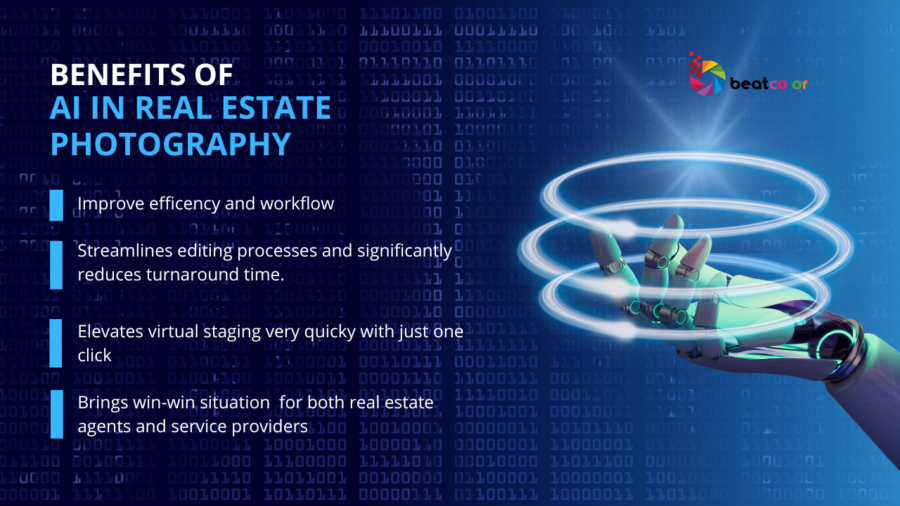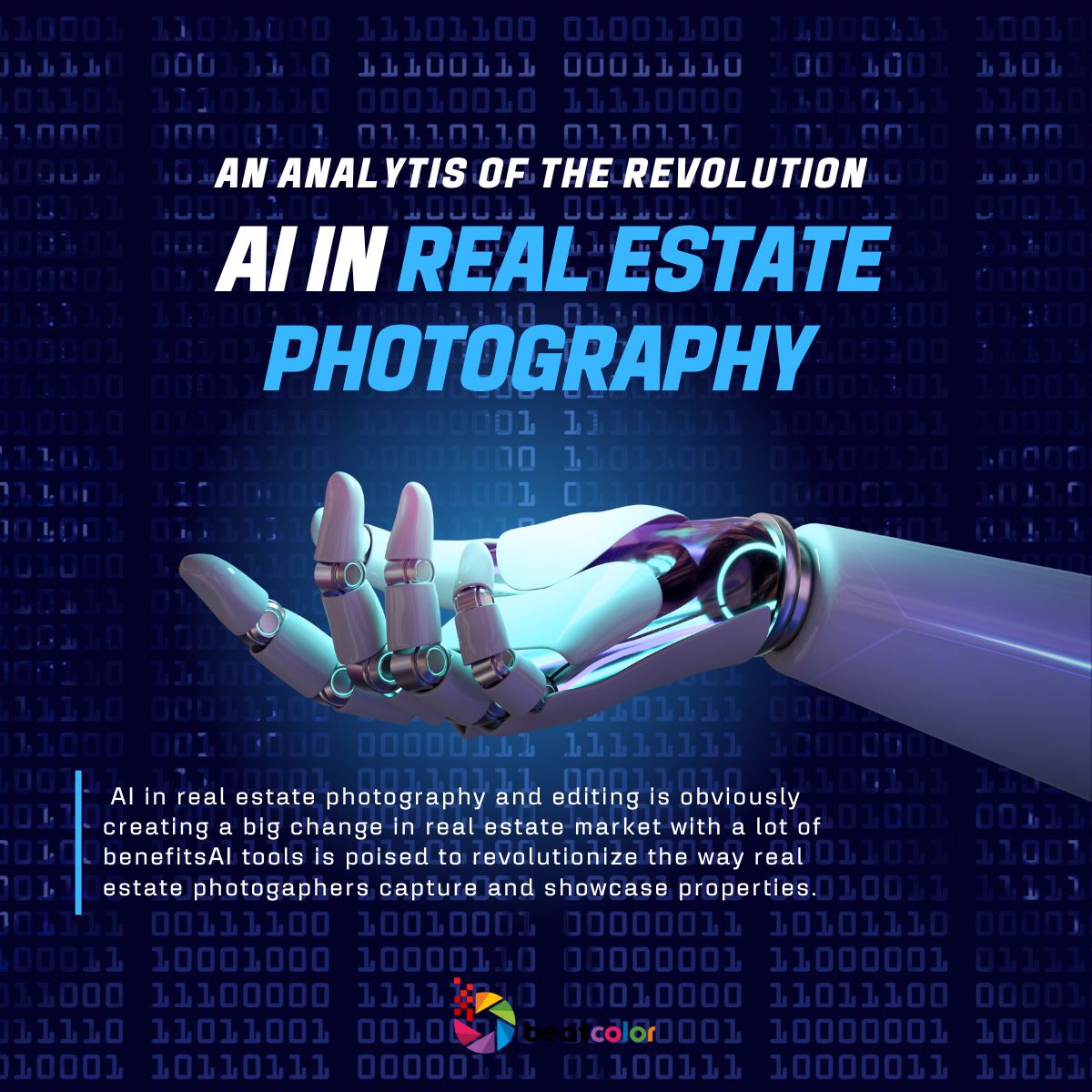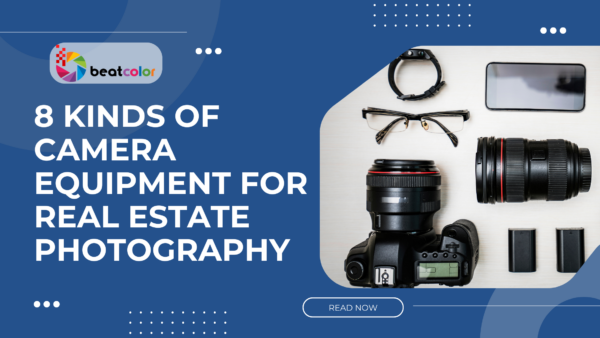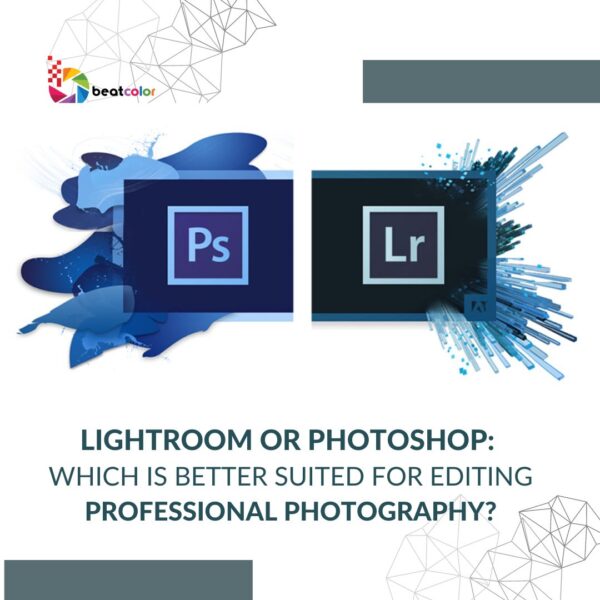AI in Real Estate Photography: A Visual Revolution
The transformation of AI in real estate photography has taken this industry by storm, bringing with it a host of innovative advancements in this industry. AI is also revolutionizing the way real estate photographers work, enabling them to enhance their creativity, streamline workflows, and produce breathtaking images. From AI-powered editing tools to the emergence of AI-generated images, the future of real estate photography is set to be reshaped by AI’s ever-growing capabilities.
In this comprehensive article, we will explore various aspects of the revolution of AI in real estate photography and how you can leverage it to attract clients and get more gigs.
What is AI in Real Estate Photography?
Artificial Intelligence or AI in real estate photography refers to the way people take advantage of modern machine learning algorithms and other smart technologies to automate and enhance various aspects of real estate photography. This can include tasks such as color correction, contrast adjustment, item removal, virtual staging, etc., AI tools can analyze a photo, understand its content, and then make intelligent decisions about how to enhance or alter the image.
These AI technologies leverage deep learning models, which are trained on large datasets of real estate images. These models learn to recognize all necessary features, the structure of a room, or the position of furniture. Once trained, these models can then generate new images or alter existing ones based on what they’ve learned just in a few seconds.
Advantages of AI in Real Estate Photography
The use of AI in real estate photography is bringing to the industry significantly positive changes. AI-powered tools have provided unprecedented efficiency and enabled photographers to complete tasks much faster than applying traditional processes.

Efficiency and Workflow Enhancement
The generative fill feature in Adobe Photoshop is a testament to the power of AI in streamlining and expediting the real estate photography process. With AI-powered tools, time-consuming and boring tasks are now automated, freeing up photographer’s time to focus on their art and creativity.
AI algorithms are able to process large volumes of data quickly, leading to better organization, which is the paint of many people.
Moreover, AI-powered automation reduces manual errors, ensuring that real estate photographers can deliver high-quality work consistently.
Time and Cost Savings
Traditionally, real estate professionals relied on manual editing processes that consumed substantial time and resources. The introduction of AI-powered tools, such as the generative fill feature, streamlines these processes and significantly reduces turnaround time.
Service providers can efficiently handle multiple properties, complete editing tasks faster, and meet tight deadlines. This time savings translate into cost savings for real estate agents, who can benefit from quicker property turnover and reduced operational expenses.
Optimizing Virtual Staging
Virtual staging has become an indispensable tool in the real estate industry, allowing agents to showcase the potential of vacant properties. AI elevates virtual staging to new heights by enabling service providers to integrate virtual furniture and decor into images seamlessly.
The generative fill feature helps create realistic and immersive virtual staging experiences, enabling buyers to envision themselves in a fully furnished and visually appealing home. This enhanced visualization can lead to increased buyer interest and higher sales conversion rates.
Creating a Win-Win Situation
The integration of AI in real estate photography constructs a wholly beneficial scenario for both real estate agents and service providers. Thanks to AI-powered tools, real estate photographers and editors can scale their operations, diversify their services, and deliver high-quality photos efficiently.
Real estate agents, on the other hand, benefit from faster turnaround times, cost savings, and visually captivating images that drive buyer engagement. By embracing AI technology, both parties can achieve greater success, strengthen their market position, and stay ahead of the competition.
Disadvantages of Using AI in Real Estate Photography
Artifacts and Structural Changes
The most popular drawback of AI software is automatically creating unrealistic artifacts and re-constructing the structure of the room. For example, AI removed the wall at the bottom of the window, resulting in images that do not accurately represent the actual room. This can be problematic for real estate agents and potential buyers, as it presents a misleading view of the property.
After all, it’s always crucial for virtual staging tools to maintain the integrity of the original room structure. Any changes can lead to confusion and potential dissatisfaction, or more awfully, can annoy the agent a lot.
Original Photo
After Virtual Staging
(Source: Nathan Cool Photo)
Low-Resolution Images
Despite superior features, AI real estate photo editing software faces the challenge of producing low-resolution images. These images, although aesthetically pleasing, do not accurately reflect the original room.
Moreover, the maximum file size upload of 10 MB may not be sufficient for professional high-resolution real estate photography. This limitation can hinder the tool’s usefulness for real estate agents and home contractors who rely on high-quality images for their marketing efforts.
The Need for Post-Processed Photos
The next significant obstacle with AI tools is the need for retouching and adjusting photos again. To get the best results, users need to either upload already-edited photos or have real estate editing experts double-check and ensure the final result. If this is ignored, the parts of the photo that need to be edited will remain in the new AI-generated images.
Plus, for users who do not have photo editing skills or access to professional photo editing services, an extra step in the process and can be time and cost-consuming.
Let’s have a look at this retouching example from BeatColor below:
Final result of BeatColor retouching real estate photo editing
In a word, these drawbacks highlight the current limitations of AI in real estate photography. While these tools offer potential benefits, they also underscore the need for further development and refinement to truly meet the needs of real estate professionals.
The Future of AI in Real Estate Photography
In spite of the current challenges, the future of AI in real estate photography has significant potential. As AI models become more sophisticated and are trained on larger and more diverse datasets, they will soon be able to generate higher-resolution images that are more realistic and accurately reflect the original room.
Furthermore, as these tools become more user-friendly and accessible, we could see more homeowners and home contractors adopting them for their own use. This could democratize access to high-quality real estate photography and staging, making these services more affordable and accessible to a wider range of users.
However, it’s important to remember that while AI can offer powerful new tools, it’s not a magic bullet. Real estate photography and staging are complex tasks that require a keen eye for detail and a deep understanding of design principles. While AI can assist with these tasks, it’s unlikely to replace the need for professional photographers and stagers entirely.
In conclusion, no matter the current state of AI in real estate photography has its challenges, its future holds significant promise. With constant advancements in AI, we can expect to see more powerful, reliable, and user-friendly tools that can truly revolutionize the field of real estate photography.
Final Thoughts
To sum up, we must recognize that the impacts of AI in real estate photography are profound and remarkable. AI contributes to enabling service providers and real estate agents to enhance efficiency, boost buyer engagement, and optimize virtual staging. Although there are still a lot of challenges, the future of AI in real estate photography is bright. As these technologies keep evolving, we can expect to see improvements in the quality, realism, and usability of these tools. The journey towards fully automated, high-quality real estate photography is still underway, and it’s totally worth watching closely.
Related Posts
BeatColor real estate photo editing services
Common real estate photo editing techniques
Free software for real estate photographers
Virtual staging service for real estate











